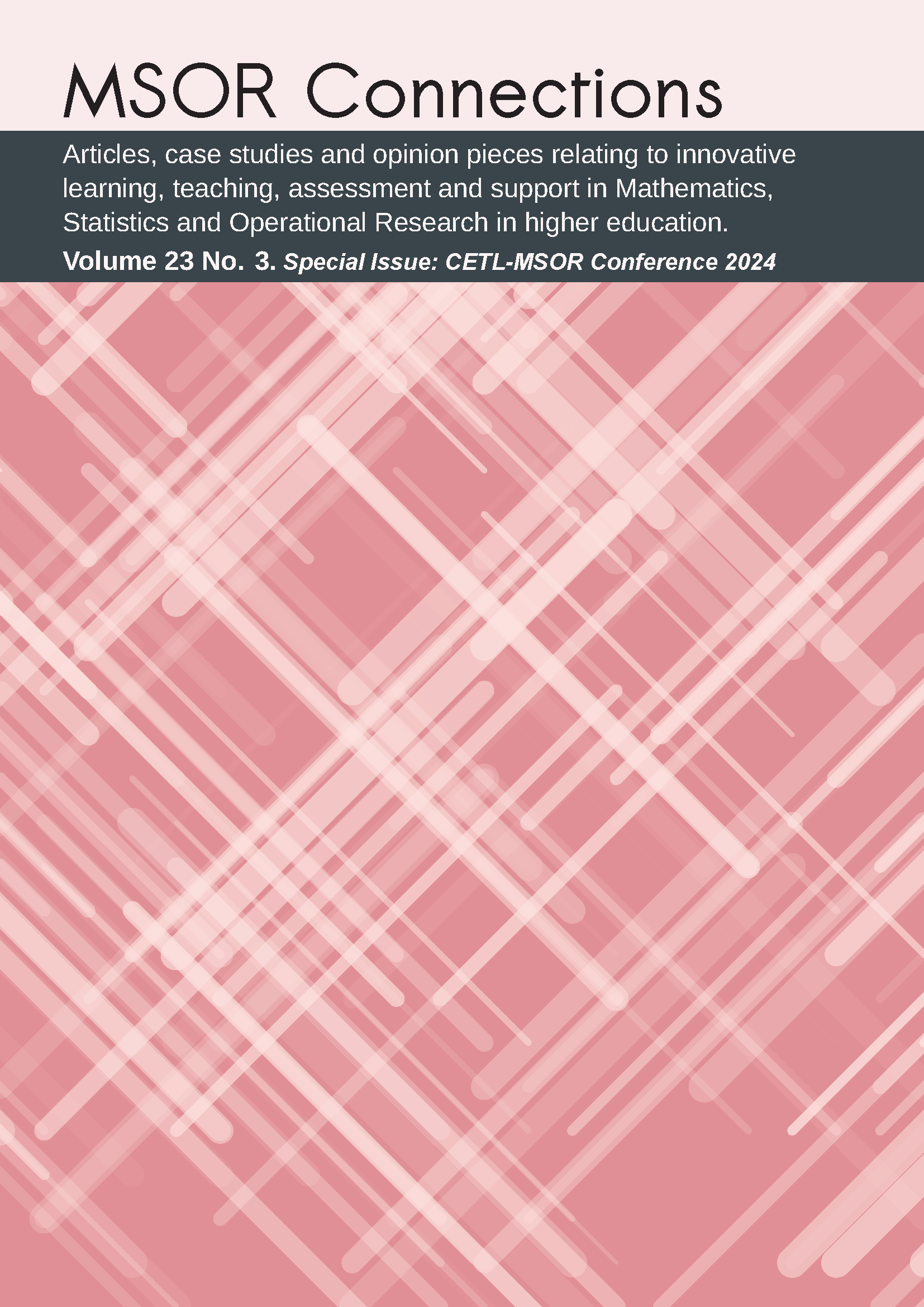Factors affecting first, second and third year undergraduate engineering students’ perception of their mathematics modules.
DOI:
https://doi.org/10.21100/msor.v23i3.1591Keywords:
engineering mathematics, mathematics problem, higher educationAbstract
It is well documented in the literature that students entering their first year of university struggle with adapting to the new teaching style and environment. This is particularly evident in the literature among students enrolled in STEM courses at university, including those enrolled in engineering courses. One of the primary concerns around students entering engineering courses in university is their level of mathematics and its subsequent effect on their learning. The issues identified in the literature focus on students in their first year of university but this neglects students in later years who may also experience issues. Therefore, in this paper, we investigate, through survey responses, if issues which cause students difficulty are present for students beyond their first year of university. Specifically, we report factors that first, second- and third-year undergraduate engineering students at an Irish university have identified as causing them difficulty when studying mathematics. Moreover, we investigate what, if any, impact these issues may have on students' perception of mathematics and their stress levels due to mathematics.
References
Alpers, B. (2008). Short report on the Discussion Groups on "What are the major problems facing Engineering Maths Education in Europe?". Brussels: European Society for Engineering Education (SEFI).
Brandell, G., Hemmi, K., & Thunberg, H. (2008). The widening gap - A Swedish perspective. Mathematics ducation Research Journal, 20, 38-56.
Braun, V., & Clarke, V. (2006). Using thematic analysis in psychology. Qualitative Research in Psychology, 3(2), 77-101.
Di Martino, P., & Gregorio, P. (2019). The Mathematical Crisis in Secondary-Tertiary Transition. Journal of Science and Mathematics Education, 17, 825-843.
Gueudet, G. (2008). Investigating the secondary-tertiary transition. Educational Studies in Mathematics, 67(3), 237-254.
Hawkes, T., & Savage, M. (2000). Measuring the mathematics problem. Engineering Council.
Hefendehl-Hebeker, L., Ableitinger, C., & Hermann, A. (2010). Mathematik Besser Verstehen. In A. Lindmeier & S. Ufer (Eds.), Beitrage zum Mathematikunterricht, 93-94.
Knight, P. (2002). Being a teacher in higher education. McGraw-Hill Education (UK).
Lawson, D. (2003). Changes in student entry competencies 1991–2001. Teaching Mathematics and its Applications, 22(4), 171-175.
Matthews Kelly, E., Belward, S., Coady, C., Rylands, L., Simbag, V., Adams, P., . . . Tariq, V. (2012). The state of quantitative skills in undergraduate science education: findings from an Australian study. Australian Government, Office for Learning and Teaching.
Murtonen, M., & Vilppu, H. (2020). Change in university pedagogical culture - The impact of increased pedagogical training on first teaching experiences. International Journal of Learning, Teaching and Educational Research, 19(3), 367-383.
O'Donoghue, J. (1999). An intervention to assist at risk students in service mathematics courses at the university of Limerick: University of Limerick teaching fellowship scheme. University of Limerick.
SEFI mathematics working group. (2002). Mathematics for the european engieneer: a curriculum for the twenty-first century. Brussels: SEFI HQ.
Society, L. M. (1995). Tackling the Mathematics Problem. London Mathematics Society.
Taleyarkhan, M. R., Lucietto, M. A., & Azevedo, M. T. (2021). How Engineering Technology Students Perceive Mathematics.
Wingate, U. (2007). A framework for transition: Supporting 'learning to learn' in higher education. Higher Education Quarterly, 61(3), 391-405.

